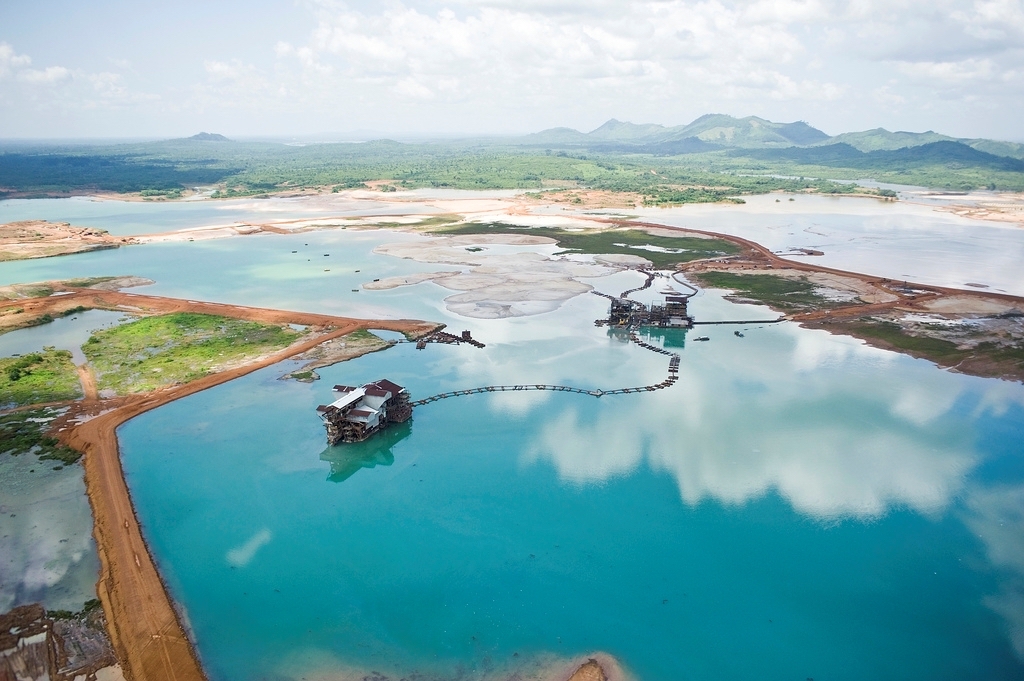Training and Exercises
Integrating environment in emergency response trainings and exercises

Integrating environment in emergency response trainings and exercises
This factsheet provides an overview of the five different eLearning modules on the environmental dimensions of disaster prevention, preparedness and response, hosted by the Environmental Emergencies Learning Centre.The courses aim to minimize the human and environmental harm caused by environmental emergencies through strengthened skills and knowledge.
The Capacity for Disaster Reduction Initiative (CADRI) is a global partnership composed of 15 UN and non-UN organizations that works towards strengthening countries' capacities to prevent, manage and recover from the impact of disasters.
Coastal Resilience is an approach and online decision support tool to help address the devastating effects of climate change and natural disasters published by the Nature Conservancy.
The GRRT is a toolkit and training program designed to increase awareness and knowledge of environmentally responsible disaster response approaches.
The course, available in Arabic, English, French, Spanish and Russian, provides an overview of the international environmental emergency response mechanisms and introduces the main actors and tools available for preparing for, and responding to, environmental emergencies.
The course, available in English and Russian, equips environmental experts and international first responders with the necessary knowledge to rapidly identify, prioritize, and mitigate the impacts of industrial chemical releases to human health and the environment.
The course, available in English, French, Spanish and Russian, provides humanitarian actors with information on how to effectively integrate environmental issues into humanitarian response and early recovery strategies.
The course, available in English, French, Spanish and Russian, seeks to provide humanitarian response staff as well as local, national, and regional government authorities with increased awareness and enhanced knowledge on disaster waste and management strategies to mitigate their environmental impact.
The course published by UN Environment and UNOCHA is available in English, French, Mandarin, Spanish and Russian, and raises awareness about industrial accidents in order to strengthen the capacity of government, industry and civil society representatives.
The Awareness and Preparedness for Emergencies at Local Level (APELL) Programme aims to reduce industrial risks at local level, raise awareness and build local capacity to respond to emergencies.
The GRRT is a toolkit and training program designed to increase awareness and knowledge of environmentally responsible disaster response approaches. It explores the links b/n livelihoods, disaster vulnerability, and ecosystems and targets environmental issues related to the implementation of post-disaster livelihoods recovery in multy sector projects.
The EEC is a one-stop-shop of information, tools, trainings and guidance to inform a more prepared and effective response to environmental emergencies…
This UN Environment Programme / Groupe URD training toolkit is designed to assist humanitarian actors with the integration of environmental considerations into their policy development, planning, programme design and operational activities.
A Massive Open Online Course (MOOC) on Environmental Security and Sustaining Peace, which provides an in-depth introduction to the multiple roles that natural resources and the environment play in the onset, escalation, resolution and recovery from violent conflicts.
IFRC's Public Awareness and Public Education for Disaster Risk Reduction "PAPE" provides guidance on risk communication.
UNESCO Guidance on using Education for Sustainable Development to promote achievement of the Sustainable Development Goals (SDGs’). The environment is especially addressed under SDG 15, from p. 40.
INFORM is a global, open-source risk assessment for humanitarian crises and disasters. It can support decisions about prevention, preparedness and response.
Understanding the current and potential future environmental conditions of a region is essential for an efficient and sustainable response
Risk analysis provides a common understanding and prioritization of risks, and should include existing environmental conditions and threats
Addressing environment as part of preparedness planning lays the foundation for its integration into humanitarian action.
Communicating risks effectively to populations and communities is essential for people to be able to be better prepared and to reduce the damaging impacts of hazards.
Policies supported by institutional frameworks and legal arrangements make up the disaster risk management framework. In order to systematically integrate environmental concerns in humanitarian action, one must consider the institutional arrangements governing disaster preparedness, response, recovery and emergency funding.




